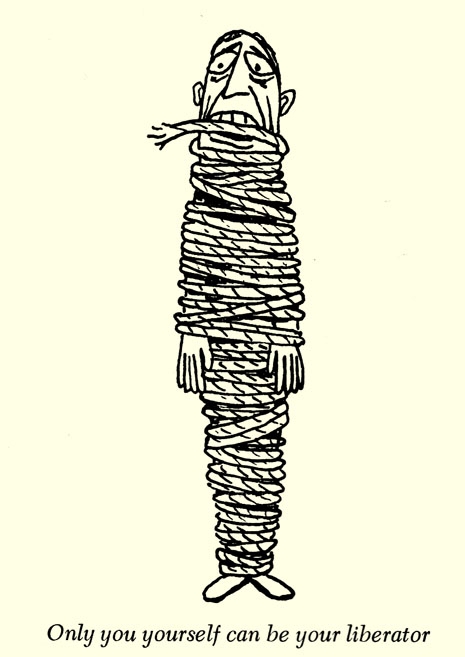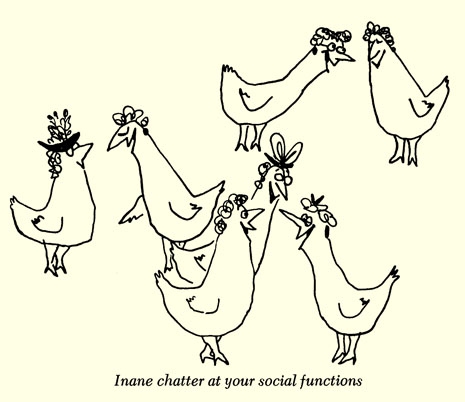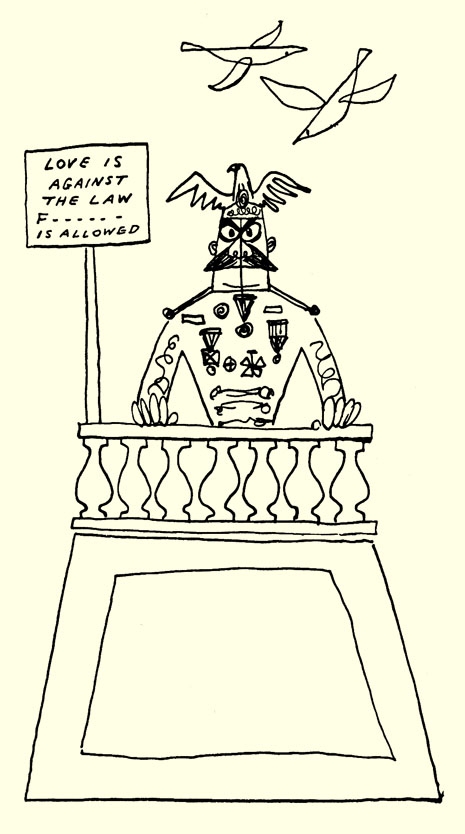
Cartoonist William Steig is beloved, and rightly so. Starting in the 1930s, his thousands of New Yorker panels (and over 100 covers) made him a giant in the cartooning world, and showed him to be an astute observer and renderer of human nature and the consequences of social class conditions (and a gifted ironist, to boot). His late-in-life career detour into children’s books yielded classics like CDB!, Sylvester and the Magic Pebble, and the completely awesome Rotten Island. Then in 1990, he wrote a little 32 page book about an ogre named Shrek, which has been adapted into four massively successful films (so far) and more video game spinoffs than I feel like trying to count. Steig’s gifts were lost to us in 2003, when he died at age 95.
A bit of trivia: Steig was a devotee of the controversial theories of Austrian psychoanalyst Wilhelm Reich.

Wilhelm Reich, after an apparent encounter with David Lynch’s barber
There is plenty to read online about Reich, both pro and con, so I will not go into great depth here. Reich was a psychotherapy pioneer, an associate of Freud’s in the 1920s, who went on to adopt some extreme positions. He was blindingly obsessed with the importance of orgasmic potency, and advocated levels of sexual permissiveness that alienated many of his contemporaries. Reich’s later career was devoted to the exploration of a cosmic energy that linked physical and mental/emotional health, “discovered” by and apparently detectable only to him, that he dubbed “orgone.” This led to his construction of supposedly therapeutic devices like the “orgone accumulator,” and “orgone cannons” (“cloudbusters”) that he claimed could be used as rainmaking devices. None of these claims have withstood scientific scrutiny, but they still have impassioned devotees.
US government medical authorities, believing Reich to be not misguided, but in fact a fraudster, won legal injunctions against the distribution of orgone accumulators as unlicensed medical devices in 1954. In 1956, Reich was imprisoned for violating that injunction, and, in one of the most notorious and singularly revolting episodes of official censorship in US history, the government supervised the burning of six tons of Reich’s books, devices, and clinical notes. Reich died in prison before he finished serving his two-year sentence, which, combined with the book burning, made a martyr of him among the types of people who think they can build perpetual motion machines in their garages and those knee-jerky “libertarian” paranoiacs who assume that anything that’s been suppressed MUST BE TRUE. However, despite Reich’s pariah status, there are ideas worth discussing in works like The Mass Psychology of Fascism and The Function of the Orgasm, among others. The title of his 1936 work The Sexual Revolution was certainly prophetic enough.

Reich and Steig’s works converged in 1949, when, frustrated that his work wasn’t being taken seriously by mainstream science (also a lil’ frustrated that he wasn’t being hailed as a savior of mankind), Reich penned an amazing and engaging screed denouncing the pettiness and stupidity of humanity, called Listen, Little Man! In it, he lambasted humanity for what he, with plentiful justification, saw as an overwhelming laziness in people, who eagerly favored their herd instincts over their greater potential, collaborating in the self-defeating destruction not just of society, but of the species itself, and so become less victim than harbinger. In the wake of WWII (ethnically a Jew, Reich fled Europe in the ‘30s), he saw little in the defeat of the Nazis to convince him that people weren’t just embracing different reasons to goose-step. The book loses some of its potency when you realize that he’s mainly so upset with people because his theories were being rejected, so ultimately you’re reading a self-mythologizing, self-pitying lashing out, a lengthy screed not unlike Bela Lugosi’s famous “I have no home” speech in Bride of the Monster. It’s still a great read if you’re in a misanthropic mood, and it contains wonderful artwork by William Steig.

Steig had skillfully handled this sort of content before, in his own books About People, The Lonely Ones, and Persistent Faces. Inspired by Picasso and Klee, he abandoned the relatively realistic brush-and-ink drawings that shaped his early fame and moved towards a more stark, abstract style, at once loopy and angular, obeisant only to the emotional truth of a character. And his assessments of wayward humanity became more and more brutal and incisive. This work was caricature as revelation. In his introduction to The Lonely Ones the great New Yorker writer Wolcott Gibbs wrote
Mr. Steig offers us a series of impressions of people set off from the rest of the world by certain private obsessions, usually, it seems, by a devotion to some particularly disastrous clichéd thought or behavior. They are not necessarily unhappy. Some of them, in fact, are obviously only too well pleased with themselves…
Righty Reich…
The illustrations in Listen, Little Man! are obviously well within this particular body of Steig’s work, and they constitute some of its most trenchant examples. It seems clear that this style of Steig’s was shaped to a degree by his therapeutic relationship and friendship with Reich—Steig even wrote the preface to Reich’s Children of the Future. Steig’s follow-up to Listen, The Agony in the Kindergarten, was absolutely a Reichian work, in which Steig BLASTED, with breathtakingly powerful pairings of pain-filled drawings and simple captions, the way Western childhood development can be pockmarked or even derailed by adult repression. Which invariably leads to the cultivation of grownups like those in Listen Little Man!, who really are just awful, awful people.













